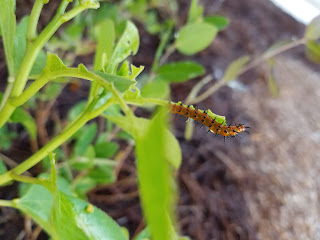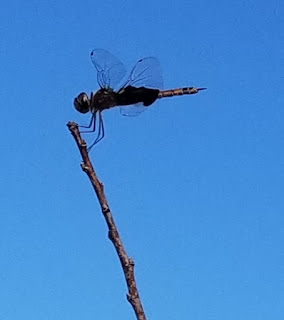The second week of September, Green Isle Gardens [http://www.greenislegardens.com/ ] arrives to work their magic once again. By the time they are finished, I will have 30+ different Florida Native plants in my yard --a good variety to attract and support many different kinds native wildlife. For trees, I have
- two Flatwood Plums
- two Yaupon Hollies
- three Simpson Stoppers
- one Wild Lime
- Beautyberry
- Compact Firebush
- Privet Senna
- Walters Vibernum
- Florida Privet
- Coontie
- red & pink Tropical Sage, Coral Honeysuckle, throw in the Muhly Grass
- pale pink Bee Balm and Swamp Milkweed
- lavender Wild Petunias, Stokes Aster, Purple Passion Vine
- yellow Rosinflower, Goldenaster, Chapman's Goldenrod
- yellow & orange Blanket Flower
- blue Twinflower, Swamp Twinflower, Sky Blue Cluster Vine
- white Rain Lilies and Scorpion-tail
·
Newly
planted backyard











